
Metabolism shapes life
EMBL Barcelona and MPI-CBG Dresden researchers reveal how glycolysis drives early embryonic cell decisions.
2025
science
Showing results out of

EMBL Barcelona and MPI-CBG Dresden researchers reveal how glycolysis drives early embryonic cell decisions.
2025
science

Supported by EMBL services, students Misha Hegde & Mia Maurer have identified a previously unknown bacteriophage that targets Rhizobium rhizogenes, a pathogen harming crops. Using cutting-edge imaging and DNA sequencing at EMBL Heidelberg, they are exploring its potential as a natural alternative…
SCIENCE & TECHNOLOGY2025
science-technology

Researchers uncover that DNA changes that cause cancer drug resistance can be grouped into four categories, and identify possible new therapeutic targets.
2024
announcements

SpatialData is a tool developed by EMBL scientists in cooperation with multiple research institutions to unify and integrate data from different omics technologies in a spatial environment, providing holistic insights into health and disease. Researchers can now freely access and use SpatialData…
SCIENCE & TECHNOLOGY2024
science-technology
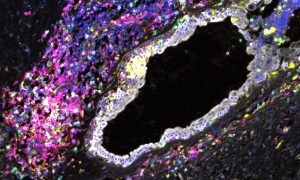
New study uncovers the potential of immunotherapy in preventing breast cancer and creates the openly available Human Breast Cell Atlas.
SCIENCE & TECHNOLOGY2024
research-highlightssciencescience-technology
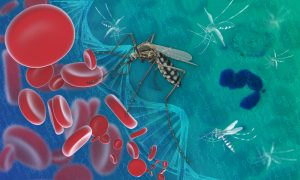
Plasmodium falciparum, a malaria parasite, uses gene conversion to produce genetic diversity in two surface protein genes targeted by the human immune system.
SCIENCE & TECHNOLOGY2024
announcementssciencescience-technology

An international team of researchers aim to combine social determinants of health with genomics, immune profiling, and exposomics data to tackle cancer inequities at an unprecedented scale.
SCIENCE & TECHNOLOGY2024
announcementssciencescience-technology
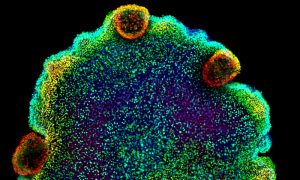
A $3.8 million grant from the Gordon and Betty Moore Foundation will help researchers lay groundwork for the Biodiversity Cell Atlas.
2024
announcements

UK Research and Innovation (UKRI) has confirmed £80.7 million of funding for EMBL’s European Bioinformatics Institute (EMBL-EBI). The funding comes from the UKRI Infrastructure Fund and will be distributed over the course of six years. It is set to help EMBL-EBI transform its technical…
2023
announcements

The new initiative brings together genomic data from various biodiversity projects to aid conservation and biodiversity efforts.
SCIENCE & TECHNOLOGY2023
announcementssciencescience-technology

Leading charities Children with Cancer UK and Cancer Research UK will co-fund a major £5.5 million research programme to advance precision medicine for relapsed childhood cancers.
2023
announcements

Scientists from the MELIS department at UPF and EMBL Barcelona have organised a symposium to discuss the work of the visionary Catalan scientist Pere Alberch, who passed away 25 years ago.
CONNECTIONS2023
connectionsevents
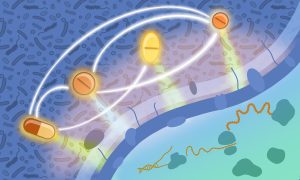
In an extensive investigation, EMBL researchers have tested over 10,000 drug combinations against some of the leading pathogenic bacteria carrying antimicrobial resistance and causing mortality.
SCIENCE & TECHNOLOGY2023
sciencescience-technology

EMBL receives the German AI prize awarded for outstanding services to the research and development as well as application and commercialisation of artificial intelligence (AI) in life science research.
EMBL ANNOUNCEMENTS2023
embl-announcementsscience

New research improves understanding of the molecular mechanisms behind why some cancers respond to immunotherapy and others don't.
SCIENCE & TECHNOLOGY2023
research-highlightssciencescience-technology

Construction begins on EMBL-EBI's new building named after Janet Thornton.
EMBL ANNOUNCEMENTSLAB MATTERS2023
announcementsembl-announcementslab-matters

Enabling researchers worldwide to share and analyse pathogen data generated across the world
SCIENCE & TECHNOLOGY2023
sciencescience-technologytechnology-and-innovation

Coming from a pharmaceutical industry background, David Hulcoop is set to take over as Executive Director of the public-private partnership Open Targets.
EMBL ANNOUNCEMENTS2023
announcementsembl-announcements
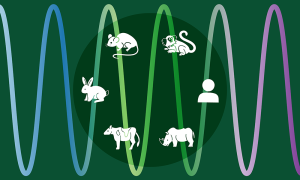
Researchers from the Ebisuya Group at EMBL Barcelona have used an unprecedented stem cell zoo to compare six different mammalian species and their developmental time.
SCIENCE & TECHNOLOGY2023
sciencescience-technology

The human pangenome – one of the most complete collections of genome sequences released so far – captures rich human diversity.
SCIENCE & TECHNOLOGY2023
announcementssciencescience-technology
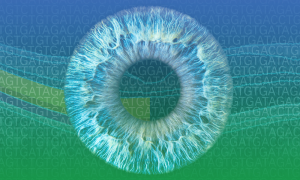
EMBL-EBI researchers use UK Biobank data to uncover new information about rare diseases of the eye.
2023
research-highlightsscience
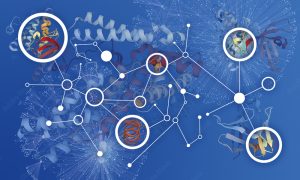
Researchers create a network of interacting proteins – or interactome – to aid drug discovery.
2023
research-highlightsscience

Funding awarded for developing tools to harness marine microbiome data for biotechnological applications and ecosystem services.
2023
announcementsscience

Open Targets announces that Genentech will become the seventh partner in the drug discovery and validation consortium.
2022
announcementsscience
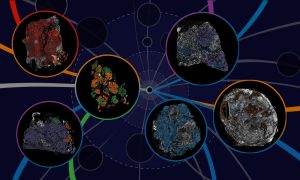
Researchers have created a tool that maps in previously unseen detail how breast cancer develops and spreads.
2022
research-highlightsscience
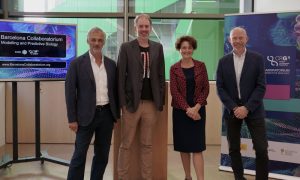
The institutes have launched a joint new initiative which aims to make biology as engineerable as an aeroplane or a bridge.
CONNECTIONSLAB MATTERS2022
connectionslab-matters
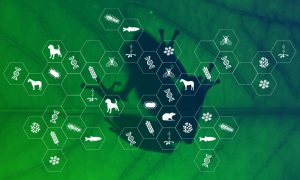
European experts gather to launch a project that aims to characterise and conserve life on Earth using DNA data.
2022
announcementsscience

Representatives from politics, industry and academia attended the inauguration ceremony at EMBL Heidelberg
EMBL ANNOUNCEMENTS2022
embl-announcementsevents
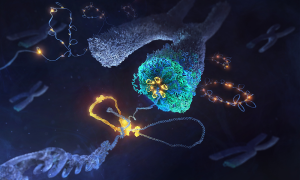
Researchers have discovered the mechanism by which a family of DNA motor proteins packages loosely arranged strands of DNA into compact individual chromosomes during cell division.
SCIENCE & TECHNOLOGY2022
sciencescience-technology
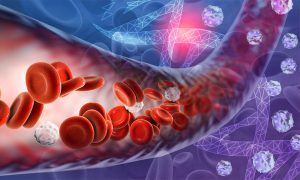
Researchers discover how DNA mutations change blood cell production and how this relates to ageing and cancer development.
SCIENCE & TECHNOLOGY2022
research-highlightssciencescience-technology
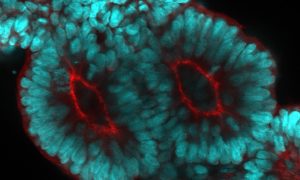
Scientists at EMBL Barcelona have created for the first time a 3D in vitro model that recapitulates the periodic formation of human somites – structures that give rise to the spinal column.
SCIENCE & TECHNOLOGY2022
sciencescience-technology
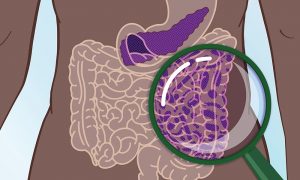
A molecular signature of 27 microorganisms in stool defines the high-risk population for the most common pancreatic cancer and could be used for early detection of the disease.
SCIENCE & TECHNOLOGY2022
sciencescience-technology

Open Targets, a consortium focused on drug target identification, prioritisation, and validation, announced today that Pfizer has joined as a partner.
CONNECTIONS2022
announcementsconnectionsscience

EMBL welcomes NetApp, a leader in cloud data services empowering global organisations to change their world with data, as member of the Corporate Partnership Programme of the EMBL Advanced Training Centre.
CONNECTIONSLAB MATTERS2020
connectionslab-matters
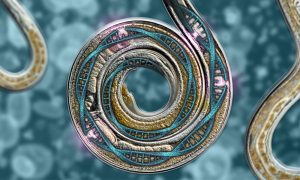
DNA mutations are caused by a combination of DNA damage and repair, shows study by EMBL-EBI and collaborators.
SCIENCE & TECHNOLOGY2020
sciencescience-technology

The Nordic EMBL Partnership for Molecular Medicine has been awarded 210,000 euros. The funds will be used to train the next generation of specialists and research leaders in molecular medicine in the Nordic countries.
CONNECTIONSLAB MATTERS2020
connectionslab-matters
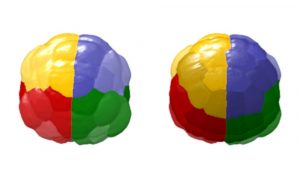
Researchers from EMBL Heidelberg have created a complete description of early embryo development, accounting for every single cell in the embryo.
SCIENCE & TECHNOLOGY2020
sciencescience-technology

The causes of 40 percent of all cases of certain medulloblastoma – dangerous brain tumours affecting children – are hereditary. These are the findings of a recent genetic analysis carried out by scientists from EMBL and numerous colleagues around the world.
SCIENCE & TECHNOLOGY2020
sciencescience-technology
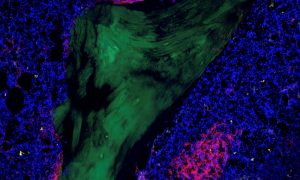
The Heidelberg-based LeukoSyStem consortium investigates leukaemia stem cells in acute myeloid leukaemia. The German Federal Ministry of Education and Research financially supports this collaboration between Heidelberg University Hospital, HI-STEM gGmbH, the German Cancer Research Center and EMBL.
EMBL ANNOUNCEMENTS2020
embl-announcementsscience
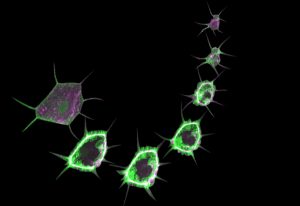
This technique provides a simple but effective way to study the functions of organs in living animals
SCIENCE & TECHNOLOGY2020
sciencescience-technology
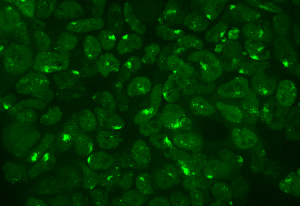
Scientists provide important new insights into the molecular basis of X-inactivation
SCIENCE & TECHNOLOGY2020
sciencescience-technology
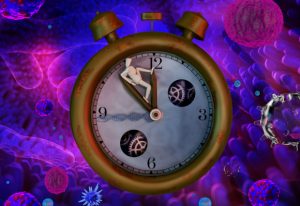
EMBL co-leads most comprehensive study of genetic causes of cancer
SCIENCE & TECHNOLOGY2020
sciencescience-technology
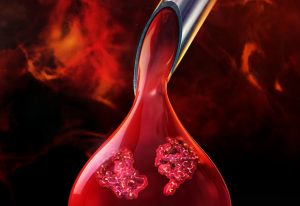
EMBL scientists identify drug targets in blood and organs
SCIENCE & TECHNOLOGY2020
sciencescience-technology
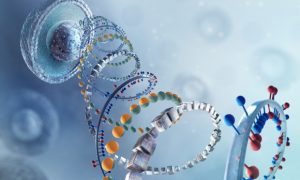
Researchers have developed a cheaper and faster method to check for genetic differences in individual cells
SCIENCE & TECHNOLOGY2019
sciencescience-technology
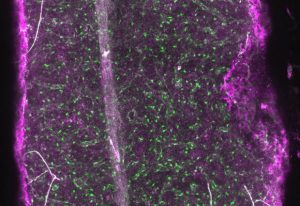
Researchers have developed new methods to reveal the 3D-organisation of bone marrow at a single cell level
SCIENCE & TECHNOLOGY2019
sciencescience-technology
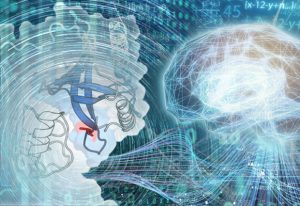
Resource has implications for disease research
SCIENCE & TECHNOLOGY2019
sciencescience-technology

Professor Eiríkur Steingrímsson will commence his initial one-year term as Chair of EMBL Council on 1 January 2020.
EMBL ANNOUNCEMENTSLAB MATTERS2019
embl-announcementslab-matters
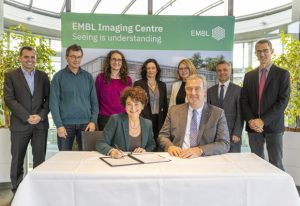
Unique long-term collaboration agreement to provide new imaging technologies
EMBL ANNOUNCEMENTS2019
embl-announcementsevents
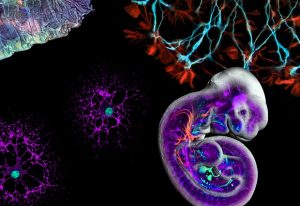
Euro-BioImaging now established as a European Research Infrastructure Consortium
CONNECTIONSLAB MATTERS2019
connectionslab-matters
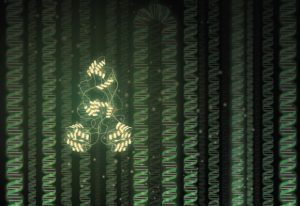
New possibilities for gene therapies
SCIENCE & TECHNOLOGY2019
sciencescience-technology

When: Friday, 4 October at 16:30 – 18:00. Where: The press conference will be held on the Tara schooner at the Port Olímpic in Barcelona. What: A press conference on the new Tara mission on microplastics and Tara’s cooperation with EMBL.…
EMBL ANNOUNCEMENTS2019
embl-announcementsevents
What: A press conference on the new Tara mission on microplastics and the Tara Ocean Foundation’s cooperation with EMBL. The press briefing will be followed by a visit to the schooner.When: Friday 27 September at 13:00 CEST.Where: The press conference will be held on the Tara…
EMBL ANNOUNCEMENTS2019
embl-announcementsevents
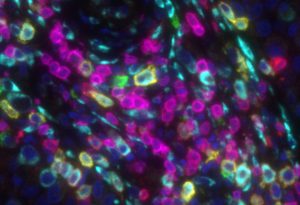
Immunotherapy: the role of B cells
SCIENCE & TECHNOLOGY2019
sciencescience-technology
When: Friday 13 September at 14:30.Where: The press conference will be held on the Tara schooner at the Porto Turistico di Roma (Lungomare Duca degli Abruzzi, 84, 00121 Roma RM, Italy).What: A press conference on the new Tara mission on microplastics and the Tara Ocean Foundation’s…
EMBL ANNOUNCEMENTS2019
embl-announcementsevents

MEG3 adopts a complex three-dimensional structure to fulfil its tumour suppressor function.
SCIENCE & TECHNOLOGY2019
sciencescience-technology
Understanding how ageing works at a molecular level
SCIENCE & TECHNOLOGY2019
sciencescience-technology
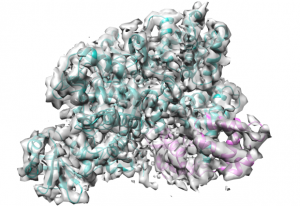
SidJ enforces a unique modification on human proteins and helps legionella grow.
SCIENCE & TECHNOLOGY2019
sciencescience-technology

Funding for EMBL | Stanford Life Science Alliance.
EMBL ANNOUNCEMENTS2019
embl-announcementsevents

Does rearranging chromosomes affect their function? EMBL scientists reveal uncoupling of 3D chromatin organisation and gene expression.
SCIENCE & TECHNOLOGY2019
sciencescience-technology

The BioImage Archive - EMBL-EBI's first dedicated imaging data resource
SCIENCE & TECHNOLOGY2019
sciencescience-technology
When: Monday 17 June at 10:30Where: The press conference will be held on the Tara schooner at the Sandtorhafen in the Hamburg harbourWhat: A press conference on the new Tara mission on microplastics and Tara’s cooperation with EMBL. A tour of the schooner will be organised with the…
EMBL ANNOUNCEMENTS2019
embl-announcementsevents
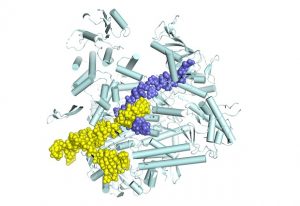
Snapshots of the flu virus replication machine in action
SCIENCE & TECHNOLOGY2019
sciencescience-technology
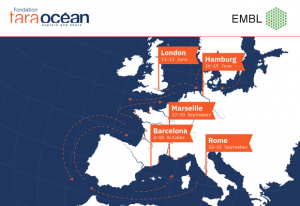
Tara Ocean Foundation launches the exploration of 10 European rivers
SCIENCE & TECHNOLOGY2019
sciencescience-technology
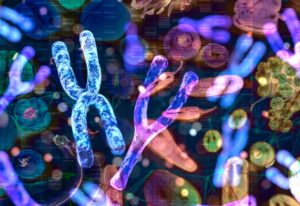
EMBL scientists have discovered that the proteome is substantially affected by both sex and diet
SCIENCE & TECHNOLOGY2019
sciencescience-technology

Foundation stone ceremony for world-class high-resolution microscopy centre in Heidelberg
LAB MATTERS2019
eventslab-matters

Colorectal cancer characterised by consistent changes in gut bacteria across continents, cultures and diets
SCIENCE & TECHNOLOGY2019
sciencescience-technology

EMBL scientists create membraneless organelle to build proteins in living cell
SCIENCE & TECHNOLOGY2019
sciencescience-technology
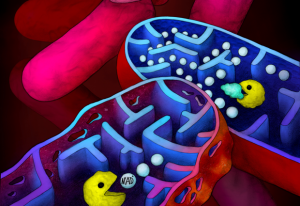
Suicide system in tuberculosis bacteria might hold key to treatment
SCIENCE & TECHNOLOGY2019
sciencescience-technology
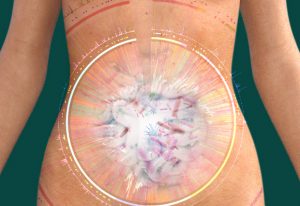
Researchers identify novel gut bacteria species and call for more data from beyond Europe and North America
SCIENCE & TECHNOLOGY2019
sciencescience-technology
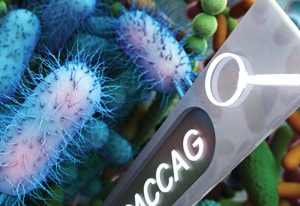
New search engine allows researchers to identify antibiotic resistance genes or mutations in real time
SCIENCE & TECHNOLOGY2019
sciencescience-technology

Enhancing the world's bioinformatics infrastructure
LAB MATTERS2019
lab-matters

Federated data sharing will now be possible on an unprecedented scale
SCIENCE & TECHNOLOGY2019
sciencescience-technology

Scientists build self-organising features into robot swarms to study shape formation
SCIENCE & TECHNOLOGY2018
sciencescience-technology
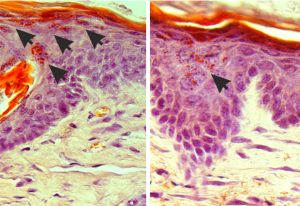
EMBL researchers have found a way to stop itch with light in mice
SCIENCE & TECHNOLOGY2018
sciencescience-technology

New algorithm will enhance understanding of relationship between genotype and environmental factors
SCIENCE & TECHNOLOGY2018
sciencescience-technology
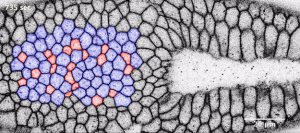
The De Renzis group investigated invagination, the first step of organ development in embryos.
SCIENCE & TECHNOLOGY2018
sciencescience-technology
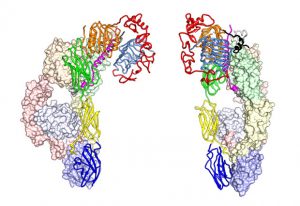
New study reveals how to make therapeutic insulins more effective than they currently are
SCIENCE & TECHNOLOGY2018
sciencescience-technology

Researchers from EMBL and Heidelberg University unveil the molecular mechanisms of ageing
SCIENCE & TECHNOLOGY2018
sciencescience-technology

Real-time tracking of proteins during mitosis is now possible using a 4D computer model
SCIENCE & TECHNOLOGY2018
sciencescience-technology
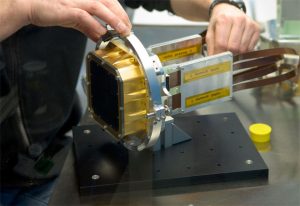
ATTRACT initiative will fund 170 breakthrough detection and imaging ideas with market potential
CONNECTIONSLAB MATTERS2018
connectionslab-matters

Complex metabolomics analyses in the cloud
SCIENCE & TECHNOLOGY2018
sciencescience-technology
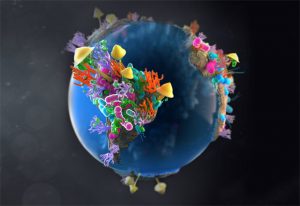
First global survey of soil genomics reveals a war between fungi and bacteria
SCIENCE & TECHNOLOGY2018
sciencescience-technology
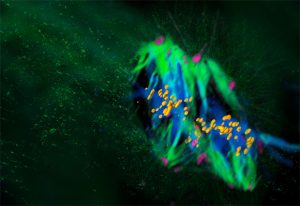
Mammalian life begins differently than we thought
SCIENCE & TECHNOLOGY2018
sciencescience-technology
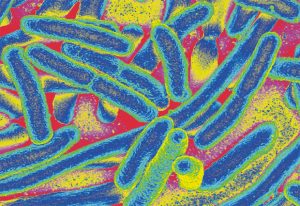
EMBL scientists investigate how bacteria melt to study their reaction to drugs
SCIENCE & TECHNOLOGY2018
sciencescience-technology
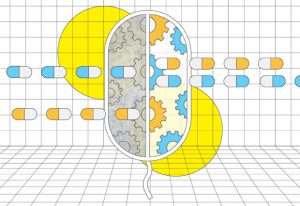
Combining antibiotics with each other, non-antibiotic drugs or food additives can alter their effectiveness
SCIENCE & TECHNOLOGY2018
sciencescience-technology
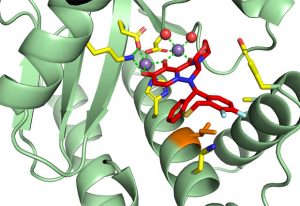
EMBL scientists investigate how influenza virus responds to new drug treatment
SCIENCE & TECHNOLOGY2018
sciencescience-technology
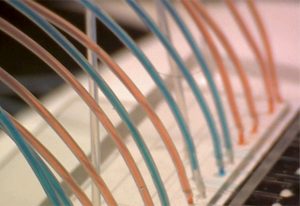
Combinations of cancer drugs can be quickly and cheaply tested using a novel microfluidic device
SCIENCE & TECHNOLOGY2018
sciencescience-technology
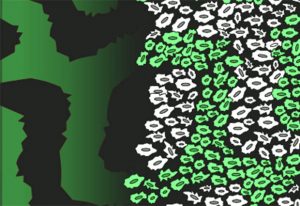
EMBL scientists extend Turing’s theory to help understand how biological patterns are created
SCIENCE & TECHNOLOGY2018
sciencescience-technology
New computational method uses multi-omics analysis for personalised medicine
SCIENCE & TECHNOLOGY2018
sciencescience-technology
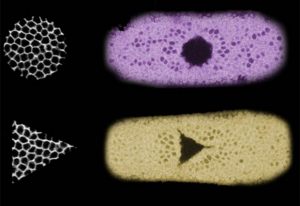
EMBL researchers guide the shape of cells and tissues with optogenetics
SCIENCE & TECHNOLOGY2018
sciencescience-technology
Of mice and gorillas: using mouse data for conservation
SCIENCE & TECHNOLOGY2018
sciencescience-technology
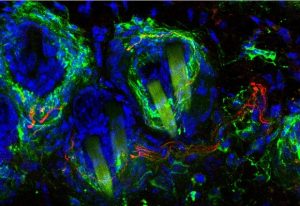
Scientists at EMBL Rome develop new method that uses light to manage neuropathic pain in mice
SCIENCE & TECHNOLOGY2018
sciencescience-technology

Dog and human gut microbiomes have more similar genes and responses to diet than previously thought
PEOPLE & PERSPECTIVES2018
people-perspectivesscience
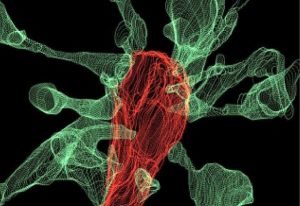
For the first time, EMBL Rome researchers have captured microglia nibbling on brain synapses on film.
SCIENCE & TECHNOLOGY2018
sciencescience-technology
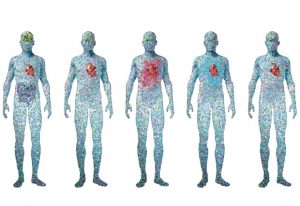
Following the completion of the Human Genome Project in 2001, scientists and the media described the genome as “the book of life”, holding the answers to the way genes are linked to disease. Yet, seventeen years later, we are still deciphering how cells interpret this book. Since…
CONNECTIONSLAB MATTERS2018
connectionslab-matters
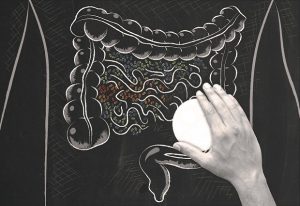
One in four drugs with human targets inhibit the growth of bacteria in the human gut, and may promote antibiotic resistance, EMBL researchers report in Nature
SCIENCE & TECHNOLOGY2018
sciencescience-technology
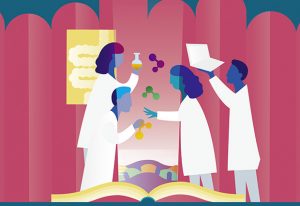
EMBL scientists show how to grow a wide range of gut bacteria in the lab
SCIENCE & TECHNOLOGY2018
sciencescience-technology
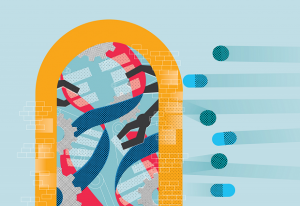
EMBL scientists unravel the molecular basis of a major antibiotic resistance transfer mechanism
SCIENCE & TECHNOLOGY2018
sciencescience-technology
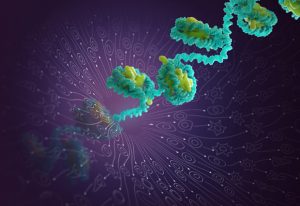
EMBL scientists show how chromatin usage in individual cells reveals developmental trajectories
SCIENCE & TECHNOLOGY2018
sciencescience-technology
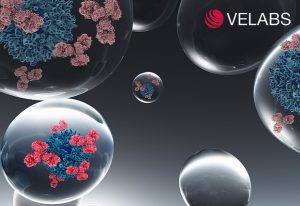
New EMBL spinoff company Velabs Therapeutics aims to speed up discovery of therapeutic antibodies
LAB MATTERSSCIENCE & TECHNOLOGY2018
lab-mattersscience-technology

EMBL scientists show that the rhythm between Wnt and Notch waves enables patterning in embryos.
SCIENCE & TECHNOLOGY2018
sciencescience-technology
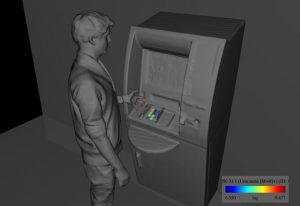
Molecule mapping method raises interest in forensics, agriculture and microbiome studies
SCIENCE & TECHNOLOGY2017
sciencescience-technology

German state and federal governments agree funding for microscopy centre at EMBL Heidelberg
LAB MATTERS2017
lab-matters

Edith Heard’s mandate scheduled to begin 1 January 2019
EMBL ANNOUNCEMENTSLAB MATTERS2017
embl-announcementslab-matters
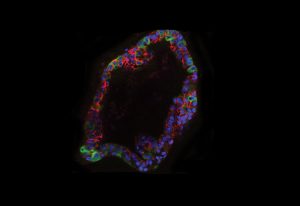
Hallmarks of residual breat cancer cells suggest new approaches for preventing relapse
SCIENCE & TECHNOLOGY2017
sciencescience-technology
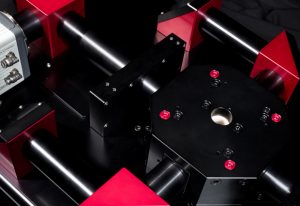
Accelerating researchers’ access to next-generation light-sheet microscopy
CONNECTIONSLAB MATTERS2017
connectionslab-matters
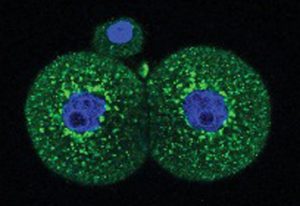
EMBL scientists detect important function of genetic sequence our ancestors assimilated from a virus
SCIENCE & TECHNOLOGY2017
sciencescience-technology
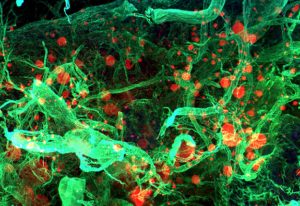
Spanish government and EMBL sign agreement for new site
EMBL ANNOUNCEMENTSLAB MATTERS2017
embl-announcementslab-matters

GSK and EMBL have signed an agreement to enhance understanding of disease and drug mechanisms
CONNECTIONSLAB MATTERS2017
connectionslab-matters
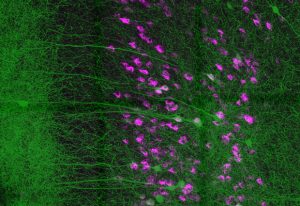
EMBL scientists find out how the prefrontal cortex puts a break on instinctive behaviours
SCIENCE & TECHNOLOGY2017
sciencescience-technology
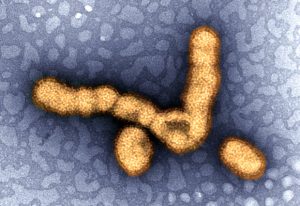
Understanding how the flu virus steals host RNA offers hope of new drugs
SCIENCE & TECHNOLOGY2016
sciencescience-technology
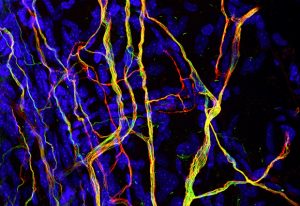
Research on the effect of nerve cell stiffness on sensitivity to touch could lead to new painkillers
SCIENCE & TECHNOLOGY2016
sciencescience-technology
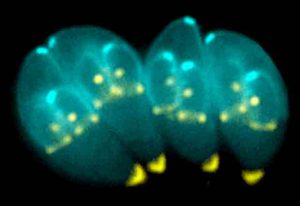
Parasite’s method of rewiring our immune response leads to novel tool for drug tests
SCIENCE & TECHNOLOGY2016
sciencescience-technology
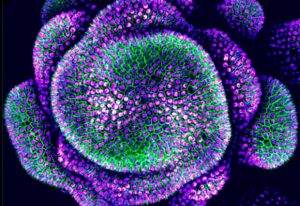
What happens when plant's leaf-placing feedback loop isn't quite right
SCIENCE & TECHNOLOGY2016
sciencescience-technology
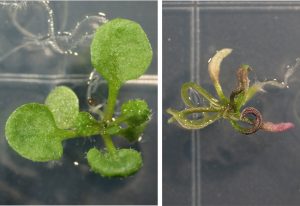
EMBL scientists investigate how leaves grow flat to efficiently capture sunlight
SCIENCE & TECHNOLOGY2016
sciencescience-technology
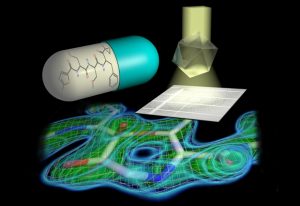
Detailed structure paves the way for more effective cancer therapies
SCIENCE & TECHNOLOGY2016
sciencescience-technology
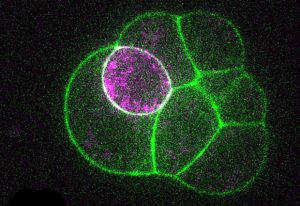
Strength of contraction determines whether cells become embryo or placenta
SCIENCE & TECHNOLOGY2016
sciencescience-technology
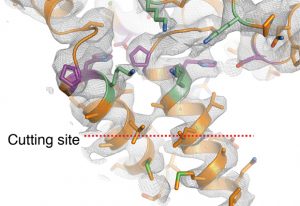
Study provides insights into workings of new HIV drugs and how virus becomes resistant
SCIENCE & TECHNOLOGY2016
sciencescience-technology

The UK’s decision to leave the EU has no direct consequences for the UK’s membership of EMBL
EMBL ANNOUNCEMENTSLAB MATTERS2016
embl-announcementslab-matters
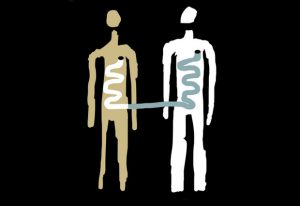
Stool transplants: finding the right match important, EMBL study shows
SCIENCE & TECHNOLOGY2016
sciencescience-technology
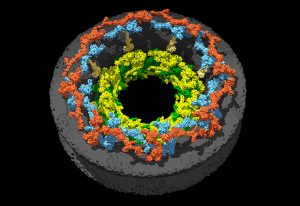
First detailed structural description of all the rings of nuclear pores
SCIENCE & TECHNOLOGY2016
sciencescience-technology
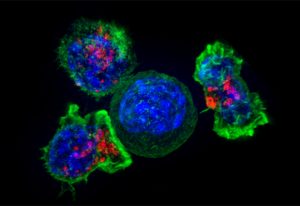
Information on structure of molecule used for genome engineering yields increased efficiency
SCIENCE & TECHNOLOGY2016
sciencescience-technology
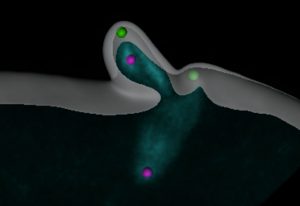
1st real-time video of starfish egg cell eliminating crucial structures, to ensure embryo viability
SCIENCE & TECHNOLOGY2016
sciencescience-technology
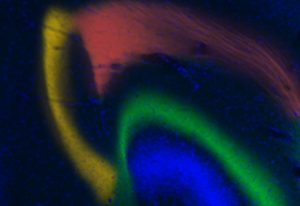
Neural mechanisms in mouse brains indicate that we actively forget as we learn
SCIENCE & TECHNOLOGY2016
sciencescience-technology
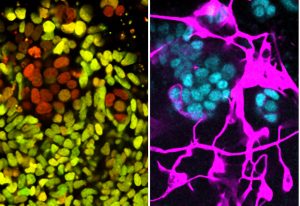
How stem cells resist change
SCIENCE & TECHNOLOGY2016
sciencescience-technology
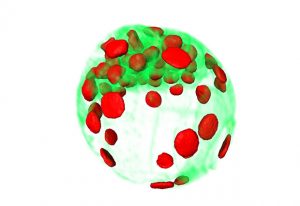
New microscope can record the first days of a mouse embryo’s life
SCIENCE & TECHNOLOGY2015
sciencescience-technology
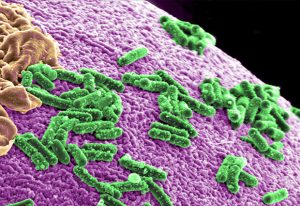
Commonly used diabetes drug metformin impacts gut bacteria more than disease itself
SCIENCE & TECHNOLOGY2015
sciencescience-technology
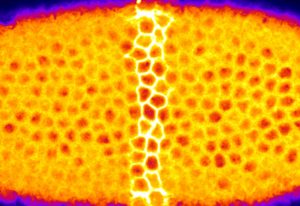
Using lasers to shed light on how tissues get into shape
SCIENCE & TECHNOLOGY2015
sciencescience-technology
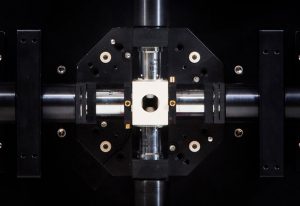
A microscopy technique is poised to shine new light on biological questions: as sheets of light can scan everything from developing embryos to single cells or functioning brains, a technique called light-sheet microscopy is gaining traction. It enables scientists to observe living cells in three…
LAB MATTERSSCIENCE & TECHNOLOGY2015
lab-mattersscience-technology
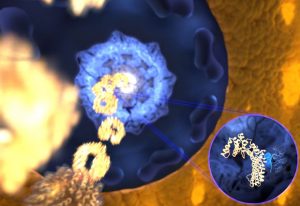
Spaghetti-like proteins are surprisingly effective 'keys'
SCIENCE & TECHNOLOGY2015
sciencescience-technology

Missing a gene may not be a big deal – a conclusion from global catalogue of genetic changes.
SCIENCE & TECHNOLOGY2015
sciencescience-technology
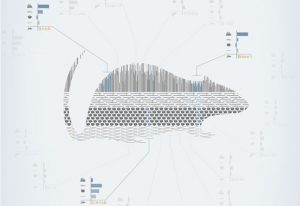
Multifaceted approach reveals how brain and liver age, helps explain why ageing brain loses plasticity.
SCIENCE & TECHNOLOGY2015
sciencescience-technology
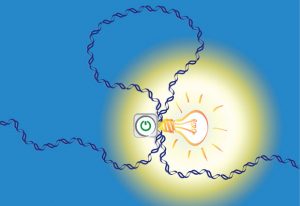
EMBL scientists map ‘switches’ for distant control of gene expression.
SCIENCE & TECHNOLOGY2015
sciencescience-technology
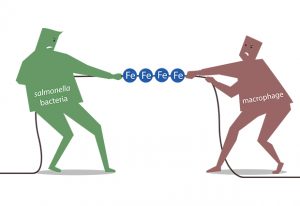
Iron regulatory proteins play important role in combatting infection, protecting against Salmonella.
SCIENCE & TECHNOLOGY2015
sciencescience-technology
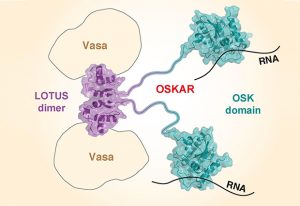
3D structure of Oskar protein gives first molecular insight into how it functions.
SCIENCE & TECHNOLOGY2015
sciencescience-technology
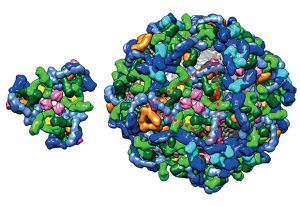
3D imaging unravels COPI coat of cells' transport vesicles.
SCIENCE & TECHNOLOGY2015
sciencescience-technology
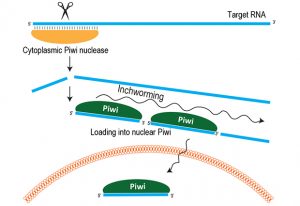
European team identify mechanism for producing piRNAs that silence jumping genes in germline cells.
SCIENCE & TECHNOLOGY2015
sciencescience-technology
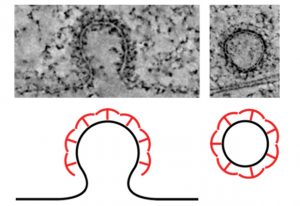
Behaviour of clathrin proteins, crucial for endocytosis, is clarified using new imaging techniques.
SCIENCE & TECHNOLOGY2015
sciencescience-technology
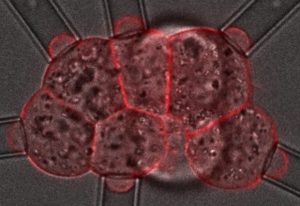
Cells 'dance' as they draw together during early embryo development.
SCIENCE & TECHNOLOGY2015
sciencescience-technology
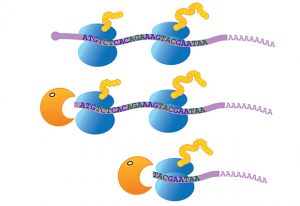
Decaying RNA molecules tell a story that could add more chapters to the study of ribosomes.
SCIENCE & TECHNOLOGY2015
sciencescience-technology
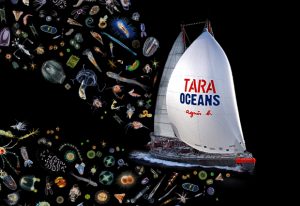
Tara Oceans results reveal climate change insights, and a treasure trove of novel species and genes.
SCIENCE & TECHNOLOGY2015
sciencescience-technology
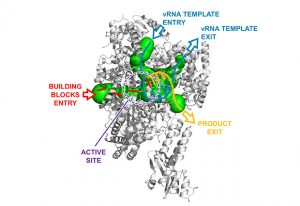
Detailed structural study shows distantly related viruses share a common machinery for replication.
SCIENCE & TECHNOLOGY2015
sciencescience-technology
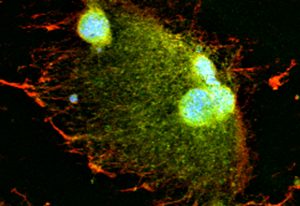
EMBL scientists demonstrate that spatial constraints are a key factor in determining nucleus size.
SCIENCE & TECHNOLOGY2015
sciencescience-technology
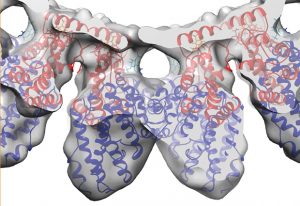
Ground-breaking microscopy technique gives unprecedented insight into endocytosis.
SCIENCE & TECHNOLOGY2015
sciencescience-technology
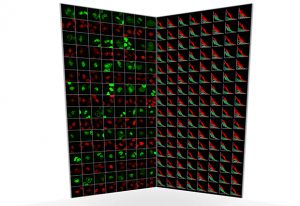
New fully automated technique enables scientists to chart complex protein networks in living cells.
SCIENCE & TECHNOLOGY2015
sciencescience-technology
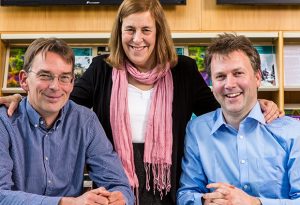
Rolf Apweiler and Ewan Birney appointed Joint Directors of EMBL-EBI, as Janet Thornton steps down.
LAB MATTERS2015
lab-matters
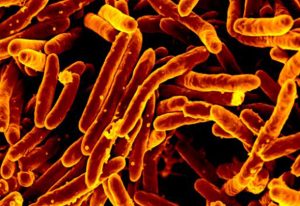
Hamburg-led tuberculosis study demonstrates the power of collaboration.
SCIENCE & TECHNOLOGY2015
sciencescience-technology
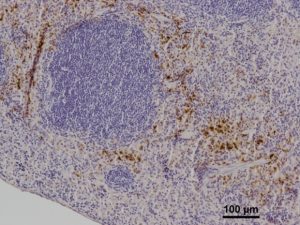
New way mice starve pathogens raises alternative approach to treatments for anaemia of chronic disease
SCIENCE & TECHNOLOGY2015
sciencescience-technology
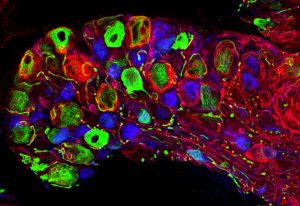
Unprecedented detail in images of mouse neurons thanks to new SNAP-tagging microscopy technique.
SCIENCE & TECHNOLOGY2014
sciencescience-technology

First complete picture of flu virus polymerase. A story of two decades of blood, sweat and sneezes.
SCIENCE & TECHNOLOGY2014
sciencescience-technology

In a Statement of Intent signed this month, Poland becomes a prospect member state of EMBL, and the new partners agree to explore possibilities for long-term cooperation, with a view to the country becoming a full member state within three years. “Poland has a strong and active life science…
CONNECTIONS2014
connectionsevents
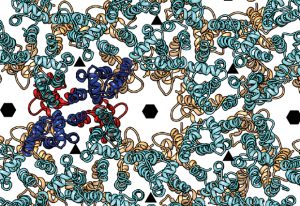
Unprecedented detail on HIV structure continues virus’ string of surprises.
SCIENCE & TECHNOLOGY2014
sciencescience-technology

Like sports teams, cells can huddle to communicate in secret and organise group behaviour
SCIENCE & TECHNOLOGY2014
sciencescience-technology
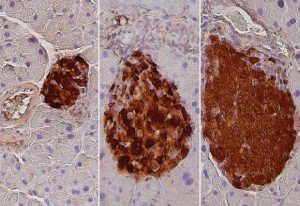
Growth factor IGF-1 boosts natural defence against type-1 diabetes and multiple sclerosis
SCIENCE & TECHNOLOGY2014
sciencescience-technology

The European Molecular Biology Laboratory (EMBL) welcomes Hungary as its newest prospect member state. In a Statement of Intent signed this month, Hungary and EMBL agree to explore possibilities for long-term cooperation, with a view to the country becoming a full member state within three years.…
CONNECTIONS2014
connectionsevents
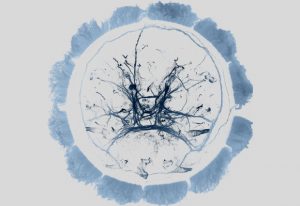
How plankton gets jet lagged: the same hormone governs our sleep patterns and a daily marine migration.
SCIENCE & TECHNOLOGY2014
sciencescience-technology
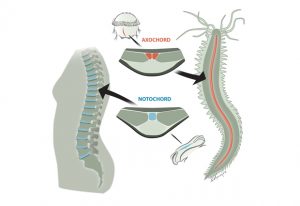
Evolutionary surprise: notochord likely evolved from muscle, earlier than assumed.
SCIENCE & TECHNOLOGY2014
sciencescience-technology
LAB MATTERS
2014
eventslab-matters
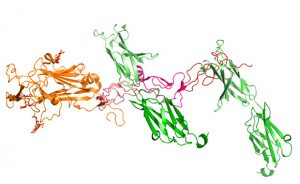
How a single molecule can attract and repel growing brain connections
SCIENCE & TECHNOLOGY2014
sciencescience-technology
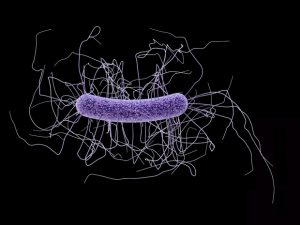
Molecular switch enables viruses to destroy C.diff bacteria – potential alternative to antibiotics
SCIENCE & TECHNOLOGY2014
sciencescience-technology
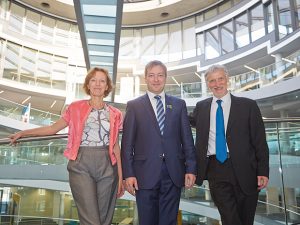
Anniversary reflections on connections between scientific and political interests.
CONNECTIONS2014
connectionsevents
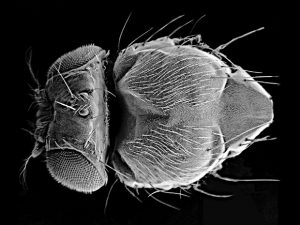
Surprising finding: enhancers find their targets long before activation in Drosophila embryos
SCIENCE & TECHNOLOGY2014
sciencescience-technology
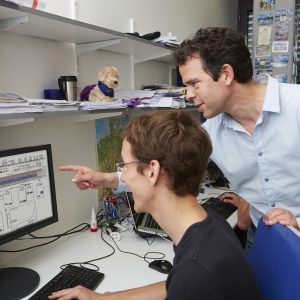
Enabling neighbours: intact genes can cause cancer when placed near "enhancing" regions of DNA
SCIENCE & TECHNOLOGY2014
sciencescience-technology

Forty years after its foundation, EMBL announces its 21st member state: the Czech Republic. Building on a successful bilateral relationship, the Czech Republic’s membership grants Czech scientists access to EMBL’s state-of-the-art instruments, facilities and world-class training…
EMBL ANNOUNCEMENTS2014
embl-announcementsevents
How a DNA stretch influences face formation and contributes to common congenital malformations
SCIENCE & TECHNOLOGY2014
sciencescience-technology
Genome Campus researchers discover that some immune cells turn themselves off by producing a steroid.
SCIENCE & TECHNOLOGY2014
sciencescience-technology

At a signing ceremony today, Argentina joins the European Molecular Biology Laboratory (EMBL) as an associate member state. The move strengthens the ties between the European and Latin American life science communities. It grants Argentinian scientists access to EMBL’s world-class facilities and…
EMBL ANNOUNCEMENTS2014
embl-announcementsevents
A pioneering public-private research initiative between GSK, the European Bioinformatics Institute (EMBL-EBI) and the Wellcome Trust Sanger Institute is to harness the power of ‘big data’ and genome sequencing to improve the success rate for discovering new medicines. The new Centre for…
CONNECTIONSLAB MATTERS2014
connectionslab-matters

The European Molecular Biology Laboratory (EMBL) welcomes the Slovak Republic as the first country to join its new Prospect Member scheme. In a Statement of Intent signed last month, the Slovak Republic and EMBL agree to explore the possibilities for long-term cooperation, with a view to the…
EMBL ANNOUNCEMENTS2014
embl-announcementsevents

Europe is uniting to make state-of-the-art imaging technologies accessible to biomedical researchers throughout the continent in a concerted manner. The European Molecular Biology Laboratory (EMBL) and seven countries (Belgium, Finland, Italy, Poland, Slovakia, the Netherlands, the United Kingdom)…
CONNECTIONSLAB MATTERS2014
connectionslab-matters
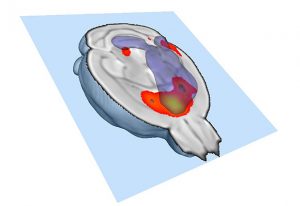
In many people with autism and other neurodevelopmental disorders, different parts of the brain don’t talk to each other very well. Scientists have now identified, for the first time, a way in which this decreased functional connectivity can come about. In a study published online today…
SCIENCE & TECHNOLOGY2014
sciencescience-technology
The European Molecular Biology Laboratory’s European Bioinformatics Institute (EMBL-EBI) and the Biotechnology and Biological Sciences Research Council (BBSRC) warmly welcome today’s announcement from the UK Government of a £75 million commitment from the Department for Business, Innovation…
LAB MATTERS2011
lab-matters
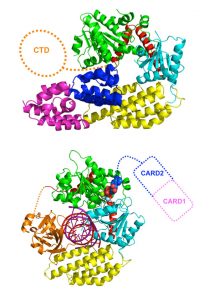
When a thief breaks into a bank vault, sensors are activated and the alarm is raised. Cells have their own early-warning system for intruders, and scientists at the European Molecular Biology Laboratory (EMBL) in Grenoble, France, have discovered how a particular protein sounds that alarm when it…
SCIENCE & TECHNOLOGY2011
sciencescience-technology
Today marks an important step for ELIXIR, Europe’s emerging research infrastructure for life-science information, as five countries plus the European Molecular Biology Laboratory (EMBL) have signed a Memorandum of Understanding to catalyse the implementation and construction of ELIXIR. The…
LAB MATTERS2011
lab-matters
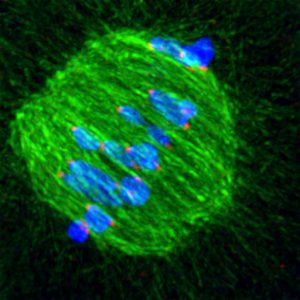
When an egg cell is being formed, the cellular machinery which separates chromosomes is extremely imprecise at fishing them out of the cell’s interior, scientists at the European Molecular Biology Laboratory (EMBL) in Heidelberg, Germany, have discovered. The unexpected degree of trial-and-error…
SCIENCE & TECHNOLOGY2011
sciencescience-technology
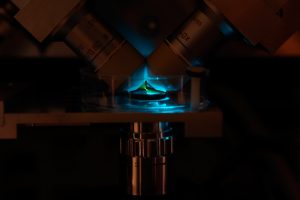
Researchers can now watch molecules move in living cells, literally millisecond by millisecond, thanks to a new microscope developed by scientists at the European Molecular Biology Laboratory (EMBL) in Heidelberg, Germany. Published online today in Nature Biotechnology, the new technique provides…
SCIENCE & TECHNOLOGY2011
sciencescience-technology
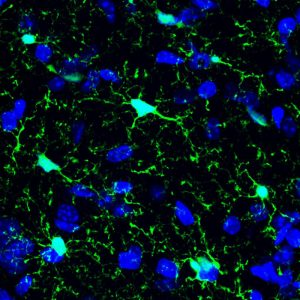
Gardeners know that some trees require regular pruning: some of their branches have to be cut so that others can grow stronger. The same is true of the developing brain: cells called microglia prune the connections between neurons, shaping how the brain is wired, scientists at the European…
SCIENCE & TECHNOLOGY2011
sciencescience-technology
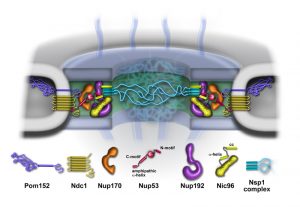
A fungus that lives at extremely high temperatures could help understand structures within our own cells. Scientists at the European Molecular Biology Laboratory (EMBL) and Heidelberg University, both in Heidelberg, Germany, were the first to sequence and analyse the genome of a heat-loving fungus,…
SCIENCE & TECHNOLOGY2011
sciencescience-technology

Lennart Philipson, who served as EMBL’s second Director General, has passed away. Lennart headed EMBL for over a decade between 1982-93, a crucial time for molecular biology when different scientific disciplines in the life sciences were becoming increasingly interlinked. He reorganised the…
LAB MATTERS2011
lab-matters
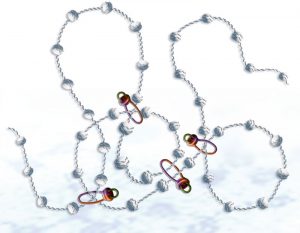
As any rock-climber knows, trailing a long length of rope behind you is not easy. A dangling length of rope is unwieldy and hard to manoeuvre, and can get tangled up or stuck on an outcropping. Cells face the same problem when dragging chromosomes apart during cell division. The chromosomes are…
SCIENCE & TECHNOLOGY2011
sciencescience-technology
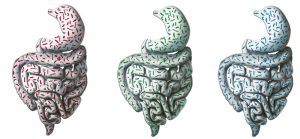
In the future, when you walk into a doctor’s surgery or hospital, you could be asked not just about your allergies and blood group, but also about your gut type. Scientists at the European Molecular Biology Laboratory (EMBL) in Heidelberg, Germany, and collaborators in the international MetaHIT…
SCIENCE & TECHNOLOGY2011
sciencescience-technology
Scientists at the European Molecular Biology Laboratory (EMBL) in Heidelberg, Germany, have developed a new method for studying gene regulation, by employing a jumping gene as an informant. Published online today in Nature Genetics, the new method is called GROMIT. It enables researchers to…
SCIENCE & TECHNOLOGY2011
sciencescience-technology
Scientists at the European Molecular Biology Laboratory (EMBL) in Heidelberg, Germany, have developed a new method which enables researchers to label any protein of their choice with any of a wide variety of previously available compounds, in living cells, by introducing a single reactive…
SCIENCE & TECHNOLOGY2011
sciencescience-technology
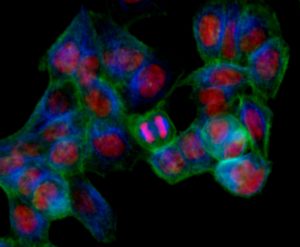
Scientists at the European Molecular Biology Laboratory (EMBL) and the German Cancer Research Centre (DKFZ), both in Heidelberg, Germany, have developed a new method that uncovers the combined effects of genes. Published online today in Nature Methods, it helps understand how different genes can…
SCIENCE & TECHNOLOGY2011
sciencescience-technology
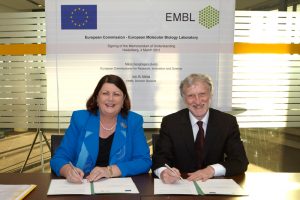
In a Memorandum of Understanding signed today, the European Commission (EC) and the European Molecular Biology Laboratory (EMBL) formalise their desire to maintain and further develop their cooperation. “I am delighted to sign the renewed and strengthened Memorandum of Understanding between the…
LAB MATTERS2011
lab-matters
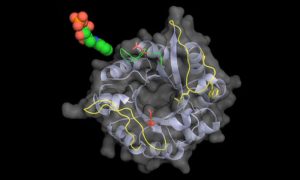
In a paper published online today in PNAS, scientists from the European Molecular Biology Laboratory (EMBL) in Hamburg, Germany, reveal new insights into the workings of enzymes from a group of bacteria including Mycobacterium tuberculosis, the bacterium that causes tuberculosis. The new findings…
SCIENCE & TECHNOLOGY2011
sciencescience-technology
The Biotechnology and Biological Sciences Research Council (BBSRC) and the European Molecular Biology Laboratory’s European Bioinformatics Institute (EMBL-EBI) welcome news that funding has been earmarked from the UK’s Large Facilities Capital Fund for ELIXIR – the European Life-science…
LAB MATTERS2011
lab-matters
In our not-so-distant evolutionary past, stress often meant imminent danger, and the risk of blood loss, so part of our body’s stress response is to stock-pile blood-clotting factors. Scientists in the Molecular Medicine Partnership Unit (MMPU), a collaboration between the European Molecular…
SCIENCE & TECHNOLOGY2011
sciencescience-technology
A detailed analysis of data from 185 human genomes sequenced in the course of the 1000 Genomes Project, by scientists at the European Molecular Biology Laboratory (EMBL) in Heidelberg, Germany, in collaboration with researchers at the Wellcome Trust Sanger Institute in Cambridge, UK, as well as the…
SCIENCE & TECHNOLOGY2011
sciencescience-technology
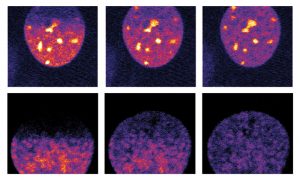
The sight of a researcher sitting at a microscope for hours, painstakingly searching for the right cells, may soon be a thing of the past, thanks to new software created by scientists at the European Molecular Biology Laboratory (EMBL) in Heidelberg, Germany. Presented today in Nature Methods, the…
SCIENCE & TECHNOLOGY2011
sciencescience-technology
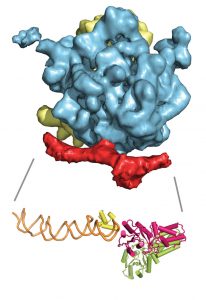
Like an overprotective parent on the first day of school, a targeting factor sometimes needs a little push to let go of its cargo. Scientists at the European Molecular Biology Laboratory (EMBL) in Grenoble, France, have visualised one such hand-over. They were the first to determine the structure…
SCIENCE & TECHNOLOGY2010
sciencescience-technology
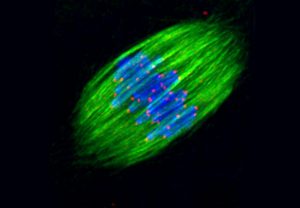
From microscopy to computer tomography (CT) scans, imaging plays an important role in biological and biomedical research, but obtaining high-quality images often requires advanced technology and expertise, and can be costly. Euro-BioImaging, a project which launches its preparatory phase today,…
SCIENCE & TECHNOLOGY2010
sciencescience-technology
The cells in the different parts of this video are always the same (grey), but, like actors using make-up to highlight different facial features, they have fluorescent labels that mark different cellular components in different colours: blue shows the nucleus, yellow shows tubulin (a component of…
SCIENCE & TECHNOLOGY2010
sciencescience-technology

At the Autumn 2010Council meeting of the EIROforum, a partnership of seven European intergovernmental research organisations with large research infrastructures, the Directors General unanimously accepted the European X-Ray Free-Electron Laser Facility (European XFEL), based in Hamburg, Germany, to…
LAB MATTERS2010
lab-matters
The 1000 Genomes Project, a major international collaboration to build a detailed map of human genetic variation, has completed its pilot phase. The results are now published in the journal Nature and freely available through the European Molecular Biology Laboratory’s European Bioinformatics…
SCIENCE & TECHNOLOGY2010
sciencescience-technology
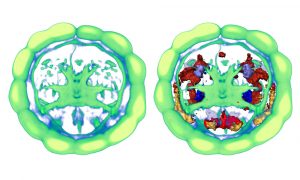
Our cerebral cortex, or pallium, is a big part of what makes us human: art, literature and science would not exist had this most fascinating part of our brain not emerged in some less intelligent ancestor in prehistoric times. But when did this occur and what were these ancestors? Unexpectedly,…
SCIENCE & TECHNOLOGY2010
sciencescience-technology
Fear can make you run, it can make you fight, and it can glue you to the spot. Scientists at the European Molecular Biology Laboratory (EMBL) in Monterotondo, Italy and GlaxoSmithKline in Verona, Italy, have identified not only the part of the brain but the specific type of neurons that determine…
SCIENCE & TECHNOLOGY2010
sciencescience-technology
During cell division, microtubules emanating from each of the spindle poles meet and overlap in the spindle’s midzone. Scientists at the European Molecular Biology Laboratory (EMBL) in Heidelberg, Germany, have uncovered the molecular mechanism that determines the extent of this overlap. In a…
SCIENCE & TECHNOLOGY2010
sciencescience-technology
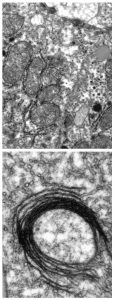
Most organisms need iron to survive, but too much iron is toxic, and can cause fatal organ failure. The same is true inside cells, where iron balance must also be maintained. In a study published today in Cell Metabolism, scientists at the European Molecular Biology Laboratory (EMBL) in Heidelberg,…
SCIENCE & TECHNOLOGY2010
sciencescience-technology
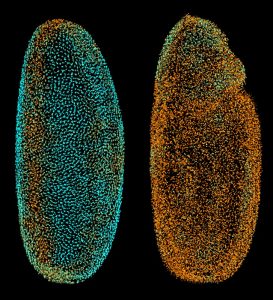
The scientists at the European Molecular Biology Laboratory (EMBL) in Heidelberg, Germany, who ‘fathered’ the Digital Embryo have now given it wings, creating the Fly Digital Embryo. In work published today in Nature Methods, they were able to capture fruit fly development on film, and were the…
SCIENCE & TECHNOLOGY2010
sciencescience-technology
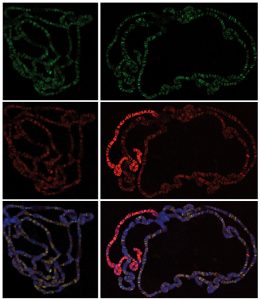
Researchers from the European Molecular Biology Laboratory (EMBL) in Heidelberg, Germany, and the Max-Planck Institute of Immunobiology Freiburg have identified a novel protein complex that regulates around 4000 genes in the fruit fly Drosophila and likely plays an important role in mammals, too.…
SCIENCE & TECHNOLOGY2010
sciencescience-technology
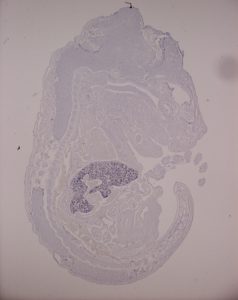
Red blood cells, the delivery men that take oxygen to cells all around the body, have short lives. To keep enough of them in circulation, the human body produces around 2 million of these cells every second – even more in response to challenges like severe blood loss. In a study published today…
SCIENCE & TECHNOLOGY2010
sciencescience-technology
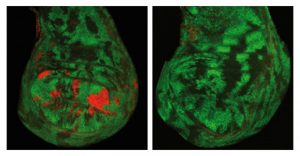
During embryonic development, proteins called Polycomb group complexes turn genes off when and where their activity must not be present, preventing specialised tissues and organs from forming in the wrong places. They also play an important role in processes like stem cell differentiation and…
SCIENCE & TECHNOLOGY2010
sciencescience-technology
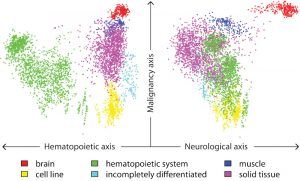
Just like members of an orchestra are active at different times although playing the same piece of music, every cell in our body contains the same genetic sequence but expresses this differently to give rise to cells and tissues with specialised properties. By integrating gene expression data from…
SCIENCE & TECHNOLOGY2010
sciencescience-technology
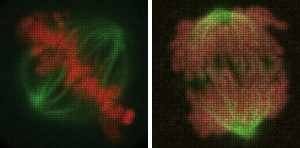
Name a human gene, and you’ll find a movie online showing you what happens to cells when it is switched off. This is the resource that researchers at the European Molecular Biology Laboratory (EMBL) in Heidelberg, Germany, and their collaborators in the Mitocheck consortium are making freely…
SCIENCE & TECHNOLOGY2010
sciencescience-technology
Once the human genome was sequenced in 2001, the hunt was on for the genes that make each of us unique. But scientists at the European Molecular Biology Laboratory (EMBL) in Heidelberg, Germany, and Yale and Stanford Universities in the USA, have found that we differ from each other mainly because…
SCIENCE & TECHNOLOGY2010
sciencescience-technology

Today, the German Minister for Education and Research, Annette Schavan, officially opens the new training and conference centre for the life sciences on the campus of the European Molecular Biology Laboratory (EMBL) in Heidelberg. “This new centre in Heidelberg will form a central European…
LAB MATTERS2010
lab-matters
The thousands of bacteria, fungi and other microbes that live in our gut are essential contributors to our good health. They break down toxins, manufacture some vitamins and essential amino acids, and form a barrier against invaders. A study published today in Nature shows that, at 3.3 million,…
SCIENCE & TECHNOLOGY2010
sciencescience-technology
The last ancestor we shared with worms, which roamed the seas around 600 million years ago, may already have had a sophisticated brain that released hormones into the blood and was connected to various sensory organs. The evidence comes not from a newly found fossil but from the study of microRNAs…
SCIENCE & TECHNOLOGY2010
sciencescience-technology
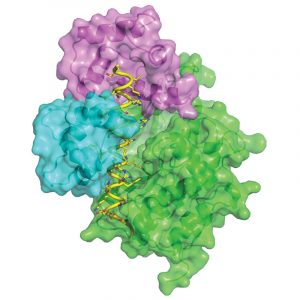
Cells rely on a range of signalling systems to communicate with each other and to control their own internal workings. Scientists from the European Molecular Biology Laboratory (EMBL) in Hamburg, Germany, have now found a way to hack into a vital communications system, raising the possibility of…
SCIENCE & TECHNOLOGY2010
sciencescience-technology
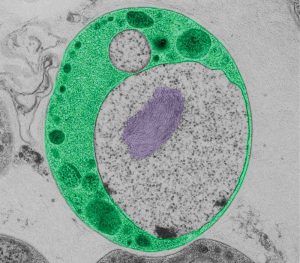
Although they are present almost everywhere, on land and sea, a group of related bacteria in the superphylum Planctomycetes-Verrucomicrobia-Chlamydiae, or PVC, have remained in relative obscurity ever since they were first described about a decade ago. Scientists at the European Molecular Biology…
SCIENCE & TECHNOLOGY2010
sciencescience-technology
ChEMBLdb, a vast online database of information on the properties and activities of drugs and drug-like small molecules and their targets, launches today with information on over half a million compounds. The data lie at the heart of translating information from the human genome into successful new…
SCIENCE & TECHNOLOGY2010
sciencescience-technology
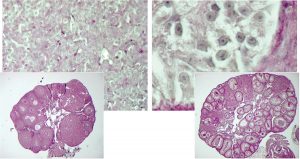
Is it a boy or a girl? Expecting parents may be accustomed to this question, but contrary to what they may think, the answer doesn’t depend solely on their child’s sex chromosomes. Scientists at the European Molecular Biology Laboratory (EMBL) in Heidelberg, Germany and the Medical Research…
SCIENCE & TECHNOLOGY2009
sciencescience-technology
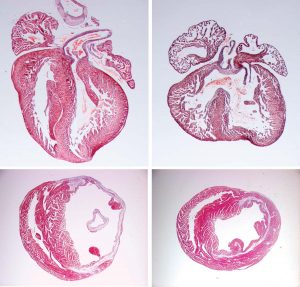
Almost a century after it was discovered in fruit flies with notches in their wings, the Notch signalling pathway may come to play an important role in the recovery from heart attacks. In a study published today in Circulation Research, scientists at the European Molecular Biology Laboratory (EMBL)…
SCIENCE & TECHNOLOGY2009
sciencescience-technology
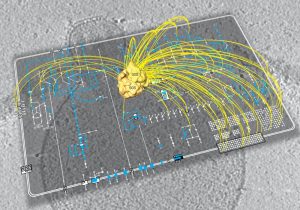
What are the bare essentials of life, the indispensable ingredients required to produce a cell that can survive on its own? Can we describe the molecular anatomy of a cell, and understand how an entire organism functions as a system? These are just some of the questions that scientists in a…
SCIENCE & TECHNOLOGY2009
sciencescience-technology
Much as adrenaline coursing through our veins drives our body’s reactions to stress, the plant hormone abscisic acid (ABA) is behind plants’ responses to stressful situations such as drought, but how it does so has been a mystery for years. Scientists at the European Molecular Biology…
SCIENCE & TECHNOLOGY2009
sciencescience-technology
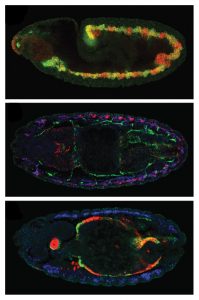
Embryonic development is like a well-organised building project, with the embryo’s DNA serving as the blueprint from which all construction details are derived. Cells carry out different functions according to a developmental plan, by expressing, i.e. turning on, different combinations of genes.…
SCIENCE & TECHNOLOGY2009
sciencescience-technology
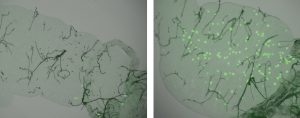
For many years, the mosquitoes that transmit malaria to humans were seen as public enemies, and campaigns to eradicate the disease focused on eliminating the mosquitoes. But, as a study published today in Science shows, the mosquitoes can also be our allies in the fight against this common foe,…
SCIENCE & TECHNOLOGY2009
sciencescience-technology
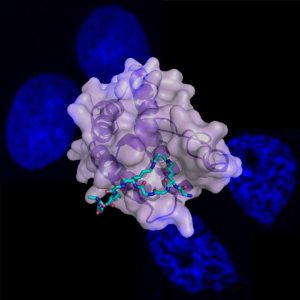
In the quest for speed, olympic swimmers shave themselves or squeeze into high-tech super-suits. In the body, sperm are the only cells that swim and, as speed is crucial to fertility, have developed their own ways to become exceptionally streamlined. Scientists at the European Molecular Biology…
SCIENCE & TECHNOLOGY2009
sciencescience-technology
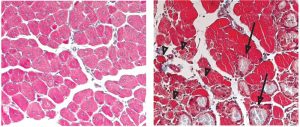
For scientists at the European Molecular Biology Laboratory (EMBL) in Monterotondo, Italy, what seemed like a disappointing result turned out to be an important discovery. Their findings, published online this week in the journal Proceedings of the National Academy of Sciences (PNAS), provide…
SCIENCE & TECHNOLOGY2009
sciencescience-technology
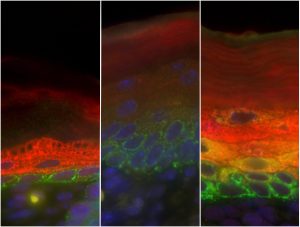
Stem cells have a unique ability: when they divide, they can either give rise to more stem cells, or to a variety of specialised cell types. In both mice and humans, a layer of cells at the base of the skin contains stem cells that can develop into the specialised cells in the layers above.…
SCIENCE & TECHNOLOGY2009
sciencescience-technology
BBSRC has awarded funding to the European Molecular Biology Laboratory’s European Bioinformatics Institute (EMBL-EBI), based at Hinxton near Cambridge, to permit a dramatic increase in the institute’s data storage and handling capacity. The funding is the first step in developing the existing…
LAB MATTERS2009
lab-matters
Our genome is constantly under attack from things like UV light and toxins, which can damage or even break DNA strands and ultimately lead to cancer and other diseases. Scientists have known for a long time that when DNA is damaged, a key enzyme sets off a cellular ‘alarm bell’ to alert the…
SCIENCE & TECHNOLOGY2009
sciencescience-technology
Chronic inflammatory lung diseases like chronic bronchitis and emphysema are a major global health problem, and the fourth leading cause of death and disability in developed countries, with smoking accounting for 90% of the risk for developing them. Work by scientists at the European Molecular…
SCIENCE & TECHNOLOGY2009
sciencescience-technology
Scientists at the European Molecular Biology Laboratory (EMBL) and the University of Heidelberg, Germany, have come a step closer to understanding how cholesterol levels are regulated. In a study published today in the journal Cell Metabolism, the researchers identified 20 genes that are involved…
SCIENCE & TECHNOLOGY2009
sciencescience-technology
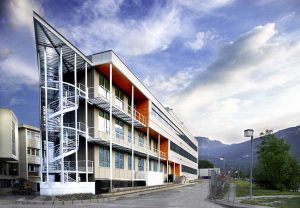
On June 26 2009 the joint international Unit for Virus and Host Cell Interactions (Unité Mixte Internationale) was formally established in Grenoble. The unit is run jointly by CNRS, the Grenoble outstation of the European Molecular Biology Laboratory (EMBL) and the Grenoble University Joseph…
LAB MATTERS2009
lab-matters
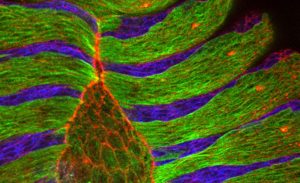
Researchers at the European Molecular Biology Laboratory (EMBL) in Heidelberg, Germany, came a step closer to understanding how cells close gaps not only during embryonic development but also during wound healing. Their study, published this week in the journal Cell, uncovers a fundamental…
SCIENCE & TECHNOLOGY2009
sciencescience-technology
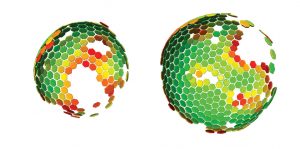
Scientists at the European Molecular Biology Laboratory (EMBL) and the University Clinic Heidelberg, Germany, have produced a three-dimensional reconstruction of HIV (Human Immunodeficiency Virus), which shows the structure of the immature form of the virus at unprecedented detail. Immature HIV is…
SCIENCE & TECHNOLOGY2009
sciencescience-technology

Mice are one of biology’s most important model organisms, because 98% of their genes and many of their traits and diseases are similar to ours. Researchers at the Mouse Biology Unit of the European Molecular Biology Laboratory (EMBL) take advantage of these similarities and use mice to study…
LAB MATTERS2009
lab-matters
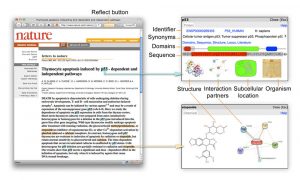
The life sciences are scaling up and produce huge amounts of data and new literature at an amazing pace. The European Molecular Biology Laboratory (EMBL) now offers a new free service to help researchers, teachers and students keep up-to-date with scientific literature on the web, especially when…
SCIENCE & TECHNOLOGY2009
sciencescience-technology
Proteins are the executive agents that carry out all processes in a cell. Their activity is controlled and modified with the help of small chemical tags that can be dynamically added to and removed from the protein. 25 years after its first discovery, researchers at the European Molecular Biology…
SCIENCE & TECHNOLOGY2009
sciencescience-technology
Most cellular processes are carried out by molecular machines that consist of many interacting proteins. These protein complexes lie at the heart of life science research, but they are notoriously hard to study. Their abundance is often too low to extract them directly from cells and generating…
SCIENCE & TECHNOLOGY2009
sciencescience-technology
Recycling is important not only on a global scale, but also at the cellular level, since key molecules tend to be available in limited numbers. This means a cell needs to have efficient recycling mechanisms. Researchers at the European Molecular Biology Laboratory (EMBL) and Heidelberg University,…
SCIENCE & TECHNOLOGY2009
sciencescience-technology
It can be found in all life forms, and serves a multitude of purposes, from energy storage to stress response to bone calcification. This molecular jack-of-all trades is polyphosphate, a long chain of phosphate molecules. Researchers at the European Molecular Biology Laboratory (EMBL) in…
SCIENCE & TECHNOLOGY2009
sciencescience-technology

‘Useless fish with big eyes’. This is what Medaka, the name of the Japanese killifish in the pictures, means in Japan where it originally comes from. While its eyes are undeniably big, the fish has proven remarkably useful for scientists. It is a simple model organism, amenable to…
SCIENCE & TECHNOLOGY2009
sciencescience-technology
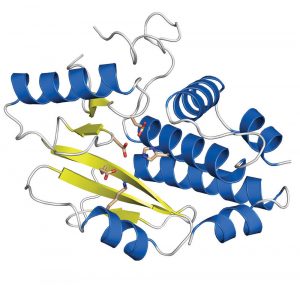
Influenza is and remains a disease to reckon with. Seasonal epidemics around the world kill several hundred thousand people every year. In the light of looming pandemics if bird flu strains develop the ability to infect humans easily, new drugs and vaccines are desperately sought. Researchers at…
SCIENCE & TECHNOLOGY2009
sciencescience-technology
Genes that contain instructions for making proteins make up less than 2% of the human genome. Yet, for unknown reasons, most of our genome is transcribed into RNA. The same is true for many other organisms that are easier to study than humans. Researchers in the groups of Lars Steinmetz at the…
SCIENCE & TECHNOLOGY2009
sciencescience-technology
No results found